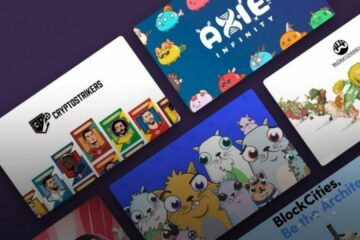We recently launched the Pixura NFT platform, which allows anyone to create and sell crypto collectibles in minutes, without writing any code. If you missed it, you might want to check out our launch blog post, which also details several use cases and ideas to build on Pixura.
This article takes a step-by-step guide to building an NFT collection and marketplace using our beta platform.
What you need to know about Pixura NFT marketplace
Pixura is built on Ethereum, so you will need to install the MetaMask browser extension, which is both a cryptocurrency wallet and a web3 interface to create your collection assets on Pixura. We recommend that you use Chrome, Firefox or Brave. Pixura is only available on desktop during our beta, but mobile support is coming soon!
Once you have clicked on ‘Start Collection’ you will be taken to this screen, where you can choose to start on the Ropsten test network or the Ethereum mainnet. (If you need a Ropsten ETH test, here’s a tap.)
Once you have created an account and set MetaMask to the appropriate network (Ropsten or mainnet), you will see the dashboard page, where you can launch your first collection.
This will open a help dialog and should open a MetaMask window. But sometimes it just puts a little gray number on the MetaMask icon in your browser, which you can click to see the MetaMask window.
You can change the gas charges if you want (if they are too low it may take a while), then confirm the transaction and close the help dialog by clicking.
On the collectibles creation page, you can upload the image and fill in the basic properties of the token. Basic properties are required and include image, name, description, and tags.
If you want, you can add unlimited additional properties at the bottom of the form; in the example below, we’ve added Rareness: Medium for this item. Since these properties are written to an immutable blockchain, please verify that everything is correct!
When you’re ready to continue, click the “Create Collectibles” button.
Next, we’re going to price the tokens, so people can go to your marketplace and buy them using MetaMask (or any web3 browser).
If you click “Set Price” on a token, you will first be prompted to approve the Marketplace smart contract through another MetaMask transaction. (In a nutshell, it just allows users to buy tokens at your fixed price, without you having to review every sale.) You only need to make this approval once per contract.
We’re excited to see what people are creating with our Live Beta. Our goal with this release was to make it easier to deploy a smart contract and create a basic collectibles market. Next, on our roadmap, we’re working on bulk tokenization, multiple editions of a collectible and custom URLs for your marketplace. Let us know if there is anything else specific you would like to see!
According to NonFungible.com, in the first quarter of 2021, the overall market capitalization of large NFT projects increased by 2,100% (the market increased by 300% over the whole of last year). Most NFTs sell out instantly, and the most well-known NFTs have sold for almost $ 70 million. In addition, the celebrities of the NFT support the hype around by symbolizing their music, paintings, even, short videos, logos, computer code, etc.
Having said that, the main beneficiaries of the NFT marketplace have been websites that make it as easy as possible to buy and sell NFTs. In this article, we’ll briefly explain what NFTs are and where they can be used, as well as how to grow your own NFT market and how much it costs.
What is NFT?
Non-fungible token, or NFT, is a digital token that acts as an electronic certificate of ownership for physical or virtual assets such as photos, videos, tweets, computer code, etc. Each NFT is a unique, non-interchangeable and indivisible digital asset. This means that unlike bitcoin or ether, NFTs are not the same as each other. They cannot therefore be negotiated or exchanged on an equivalent basis and cannot be used as a means of payment for commercial transactions.
For example, NFT Cryptopunk 4250 is a Certificate of Ownership for a unique character that exists digitally, which is described as a pixelated image of a punk woman wearing welding goggles, with tousled hair and purple lipstick. The item is listed for sale on Larva Labs for $ 116,913.
As you can see, NFTs can bring in insane amounts of money. Some NFTs are of course more attractive and therefore people are willing to pay large sums to get them, while other NFTs sell for pennies. The principle of value formation in this market is simple: the more famous (sought after) a lot, the more expensive it is.
Here are some other examples of well-known NFT bundles:
The digital collage “Every Day: The First 5,000 Days” by artist Beeple sold at Christie’s for an astronomical sum of $ 69 million.
- Twitter CEO’s first tweet sold for $ 2.9 million.
- The Nyan Cat animated film sold for $ 590,000.
- The CryptoKitties kitten was sold for $ 172,000.
How does the NFT market work?
Unlike bitcoin or ethereum, you cannot trade non-exchangeable tokens directly on regular cryptocurrency exchanges. To buy and sell NFTs, you need special trading platforms that allow you to issue, store, and trade non-exchangeable tokens. The large marketplaces OpenSea, Rarible, Superfarm and Mintable currently dominate this market.
They generate NFTs using special smart contracts that add a unique set of information (metadata) to each of these tokens and prescribe its basic parameters (name, immutability, indivisibility, address / number, etc.). Non-exchangeable tokens can then be bought and sold on the platform at a fixed price or through auctions.
On the customer side, NFT marketplaces function like regular online stores. The user must register on the platform and create a personal digital wallet to store NFTs and cryptocurrencies. The user can then use the list to purchase NFTs or create their own token. Managing an NFT is generally straightforward and similar to setting up an eBay listing. You must provide a name, price, description and picture, photo, video, gif, etc.



0 Comments